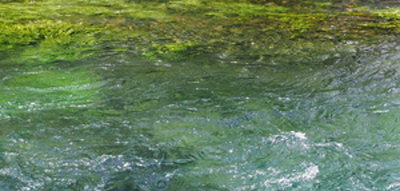Are you looking for an alternative, effective GC/MS/MS method for dioxin analysis in water? Would you like to reduce time-consuming sample preparation without highly sensitive and selective instrumentation? If so, Separation Science in collaboration with Agilent Technologies offers an on-demand webinar presentation showing how GC/MS/MS can provide a much cheaper and easier method for operation.
Summary Dioxin compounds, including polychlorinated dibezo-p-doxins (PCDDs) and polychlorinated dibenzofurans (PCDFs), are a class of global persistent organic compounds (PoPs). These compounds have 210 congeners, 17 of which, with chlorine substitution in the 2,3,7,8 positions, are considered as highly toxic and of the most interest in trace analysis. Determination of dioxin compounds in water/wastewater samples is very complicated, requiring time-consuming sample preparation and highly sensitive and selective instrumentation. Currently, GC coupled to high-resolution magnetic sector mass spectrometry (GC/HRMS) is the reference technique in EPA Method 1613b; however, GC/HRMS is expensive in maintenance and requires a highly specialized skillset for operation. GC/MS/MS, instead, is much cheaper and easier for operation.
Dioxin compounds, including polychlorinated dibezo-p-doxins (PCDDs) and polychlorinated dibenzofurans (PCDFs), are a class of global persistent organic compounds (PoPs). These compounds have 210 congeners, 17 of which, with chlorine substitution in the 2,3,7,8 positions, are considered as highly toxic and of the most interest in trace analysis. Determination of dioxin compounds in water/wastewater samples is very complicated, requiring time-consuming sample preparation and highly sensitive and selective instrumentation. Currently, GC coupled to high-resolution magnetic sector mass spectrometry (GC/HRMS) is the reference technique in EPA Method 1613b; however, GC/HRMS is expensive in maintenance and requires a highly specialized skillset for operation. GC/MS/MS, instead, is much cheaper and easier for operation.
What is covered?
This current study developed an alternative method for dioxin analysis in water samples. In contrast to the GC/MS/MS method for dioxin analysis in food and feed, which primarily focuses on the 17 toxic dioxin compounds, the method for dioxin analysis in water samples needs to consider the potential co-elution and interference of non-toxic dioxin congeners. Therefore, this presentation discusses not only the sensitivity for low level dioxin quantification via an Agilent 7010B high efficiency quadrupole MS/MS system but also the separation of toxic and non-toxic dioxin compounds in water samples via an appropriate GC program.
By attending this webinar you will learn:
- an alternative GC/MS/MS method for dioxin analysis in water
- if this method can meet EPA method 1613b criteria?
- comparison among GC/HRMS, GC/MS/MS and GC/MS
Presenter Hui Lin
Hui Lin
(The Dow Chemical Company, Michigan, USA)
View on-demand now and discover an improved method for dioxin analysis in water using isotope dilution GC/MS/MS




